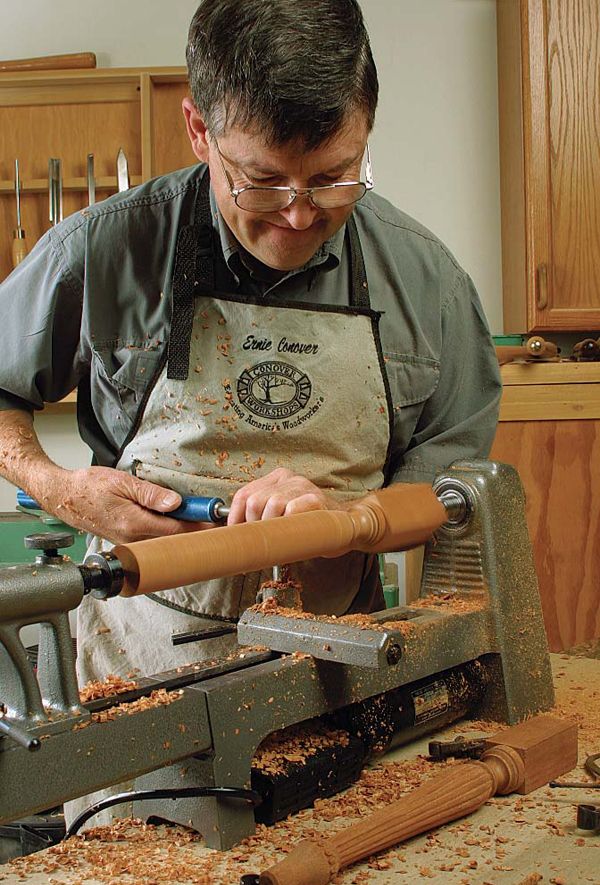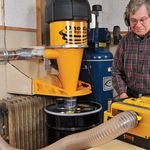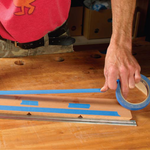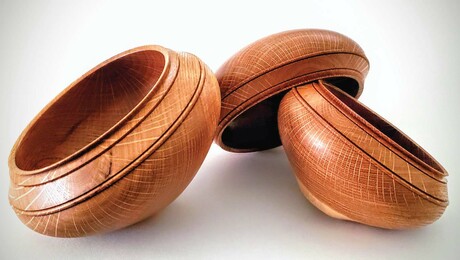Learn to Turn Spindles
With only four tools, you can turn cylinders, tapers, beads and coves
Synopsis: All turning techniques are based on cutting a bead, a cove, a cylinder, or a taper; if you can cut these four shapes, you can turn anything. In this primer on basic turning, Ernie Conover also provides an overview of the four basic turning tools, and offer tips for preparing your tools in ways that will preserve your enthusiasm and limit your frustration. Few tools come from the factory with the correct grind, so he shows how to get them ready. Also, learn how to turn matching drawer pulls.
In many ways turning is the simplest branch of woodworking: All turning is a bead, a cove, a cylinder or a taper; if you can cut these four shapes, you can turn anything. Likewise, there is no need to begin with a rack full of tools: a roughing-out gouge, a spindle gouge, a V-parting tool and a skew chisel are sufficient for the novice.
Why is it, then, that the early enthusiasm of many beginners turns to frustration in the face of sustained difficulties? The answer can be summed up in two words—tool preparation. Few tools come from the factory with the correct grind, and none will be as sharp as it could be. I’ll demonstrate how to put a correct grind on all of them and how to keep them sharp; then and only then can you start to make shavings.
Selecting and preparing your tools
I urge you to avoid sets of tools. They may or may not contain a good spindle gouge, they will likely have a skew chisel that is too narrow, and there will be too many scrapers. Buy high-speed steel (HSS) tools, which are only slightly more expensive than regular (high-carbon) steel tools and hold an edge longer; you cannot draw the temper during grinding, even if you overheat the tool.
Roughing-out gouge— I recommend a 11 ⁄4-in. gouge, but the 3 ⁄4-in. version is a good, less-costly second choice. The roughingout gouge can be ground with a blunt fingernail face, but I prefer it with a square face because it is easier to cut up to a shoulder. The tool can be ground either with the handle resting in a pocket holder (see the top photo at right) or simply braced against your thigh.
Spindle gouge— A 1 ⁄2-in. spindle gouge will be your workhorse, so invest wisely. Check the shaft to make sure the steel is from a round bar rather than from a thin section of rolled steel. A spindle gouge operates best with a long fingernail grind but is usually delivered with a short blunt grind (see the photos at right). While it is possible to grind a fingernail by eye on a bench grinder, it is difficult to do. Oneway, Sorby and Tormek all make jigs to simplify this task. You can also find a shop-built jig on p. 97 of The Lathe Book (The Taunton Press, 2001) and at www.finewoodworking.com.
I tend to grind a very long fingernail, which I call a high-society grind, but other turners work successfully with a somewhat more blunt fingernail. Experiment to find what length suits your turning style, but always polish your fingernail to a razor-sharp edge. This can be done with slipstones, but with a buffing wheel it’s far quicker and you are less likely to miss a section.
From Fine Woodworking #156
For the full article, download the PDF below:
Fine Woodworking Recommended Products


Starrett 12-in. combination square

3M Blue Tape























Log in or create an account to post a comment.
Sign up Log in